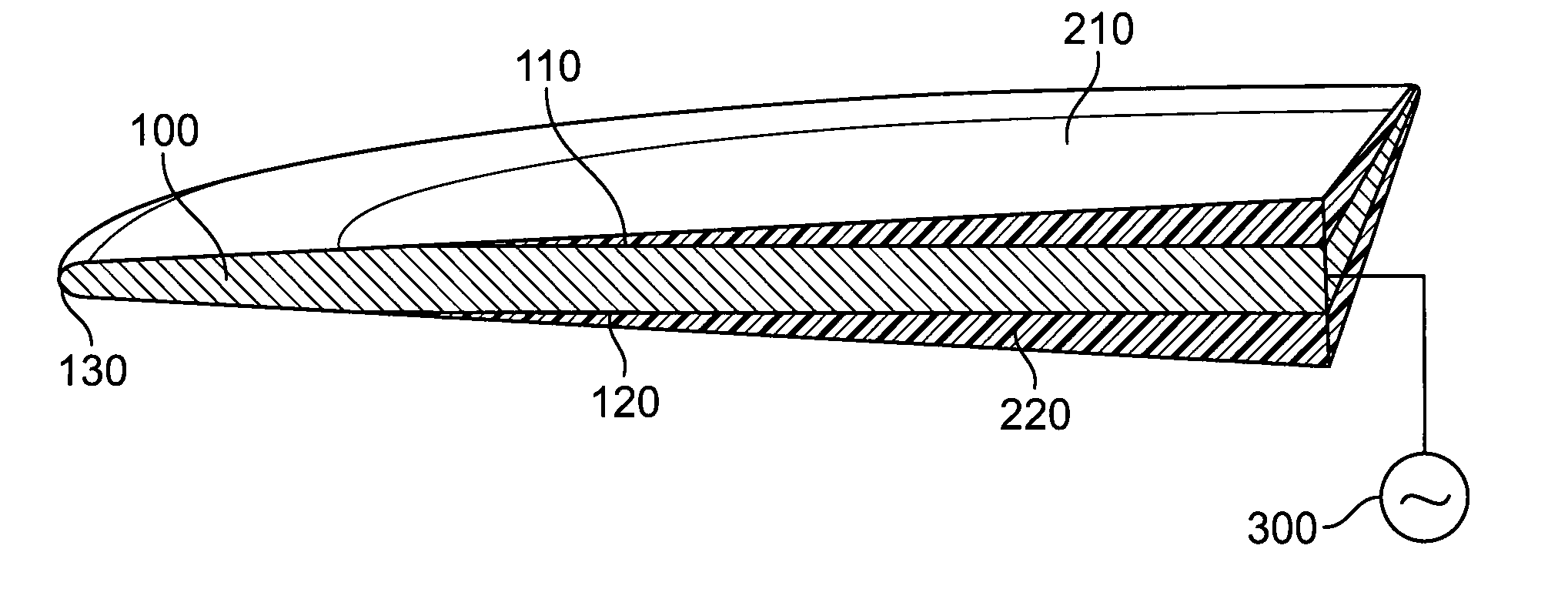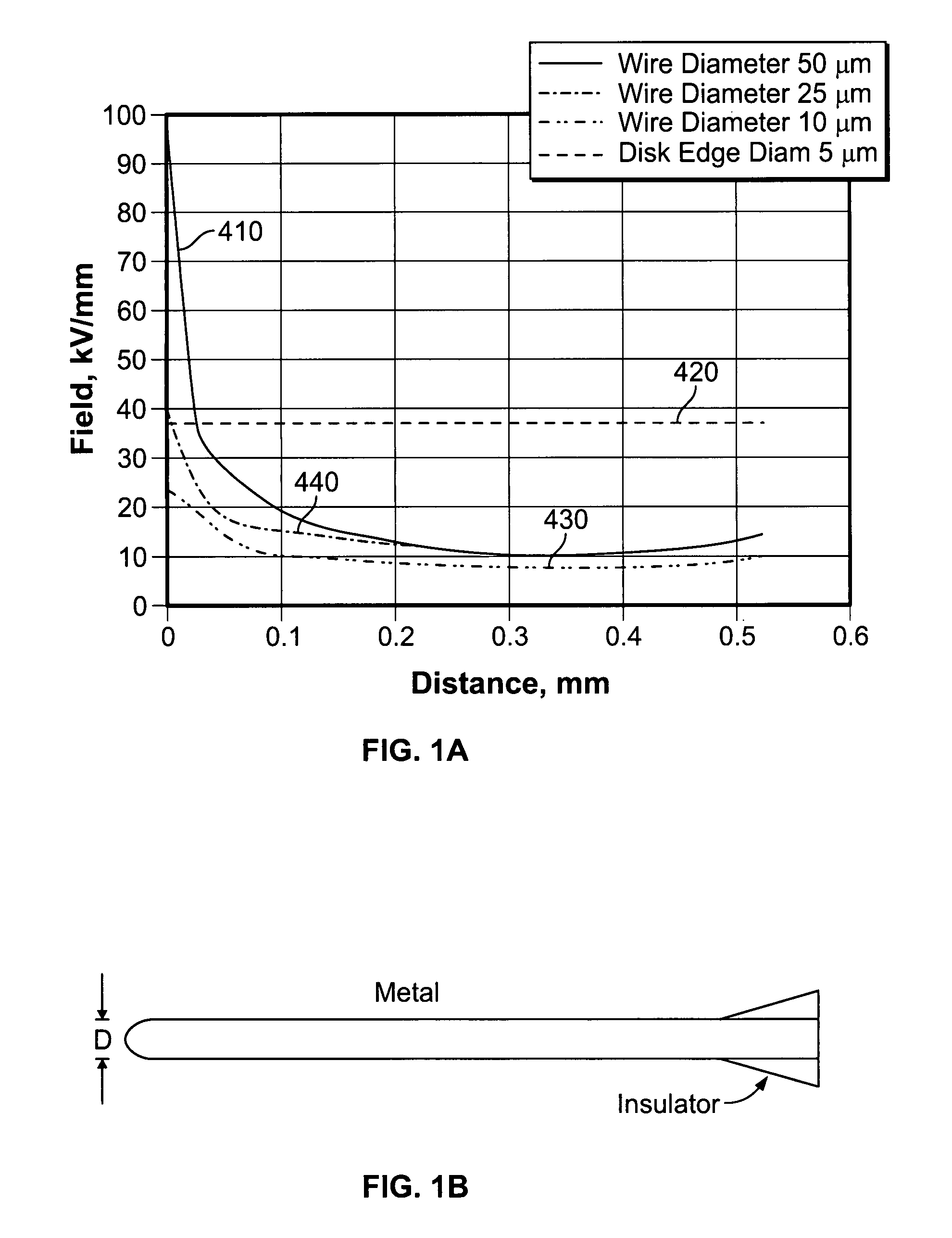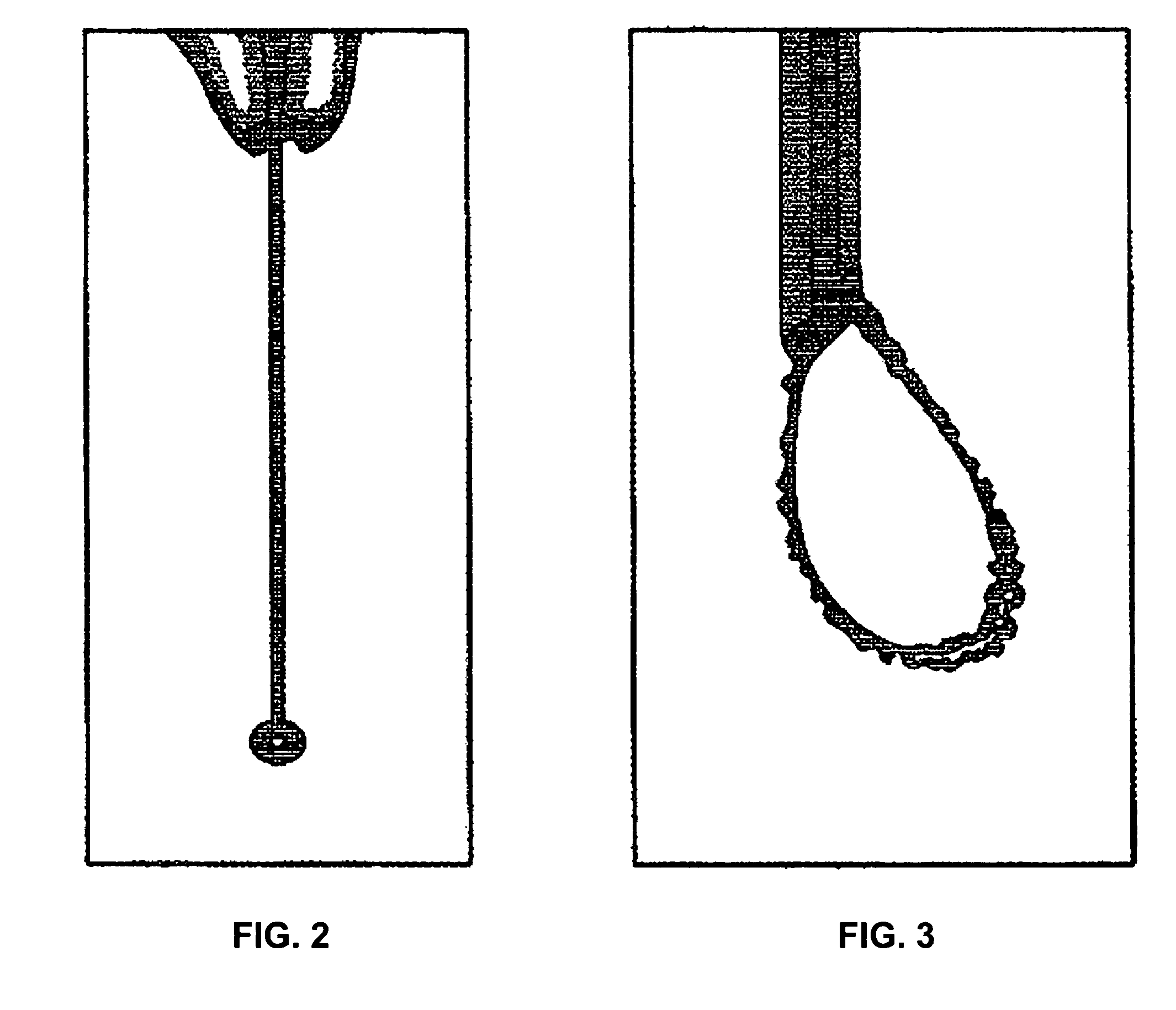Electrosurgical system with uniformly enhanced electric field and minimal collateral damage
a surgical system and electric field technology, applied in the field of electrosurgical devices, can solve the problems of reducing unable to penetrate the electrode into the tissue, and causing shallow cuts on the surface, so as to reduce the effect of electroporation-related tissue damage and effective smoothing
- Summary
- Abstract
- Description
- Claims
- Application Information
AI Technical Summary
Benefits of technology
Problems solved by technology
Method used
Image
Examples
Embodiment Construction
[0056]Referring now to the drawings, where similar elements are numbered the same, FIG. 4A depicts an electrically conductive blade 100 having a first blade surface 110, a second blade surface 120, and a blade edge 130. In practice, the blade edge 130 is somewhat rounded, the edge radius of curvature 140 being shown in the magnified view of FIG. 4B. A first insulator 210 is affixed to the first blade surface 110. Similarly, a second insulator 220 is affixed to the second blade surface 120. To complete an electrosurgical cutting system, a source of pulsed electrical energy 300 is coupled to the blade 100. The other terminal from the source of pulsed electrical energy 300 is connected to a return electrode (not shown) immersed in the medium in which the blade 100 is inserted.
[0057]At any position on the blade 100, the blade thickness is the smallest distance between the first blade surface 110 and the second blade surface 120. In some embodiments, in the region adjacent the blade edge...
PUM
 Login to View More
Login to View More Abstract
Description
Claims
Application Information
 Login to View More
Login to View More - R&D
- Intellectual Property
- Life Sciences
- Materials
- Tech Scout
- Unparalleled Data Quality
- Higher Quality Content
- 60% Fewer Hallucinations
Browse by: Latest US Patents, China's latest patents, Technical Efficacy Thesaurus, Application Domain, Technology Topic, Popular Technical Reports.
© 2025 PatSnap. All rights reserved.Legal|Privacy policy|Modern Slavery Act Transparency Statement|Sitemap|About US| Contact US: help@patsnap.com



